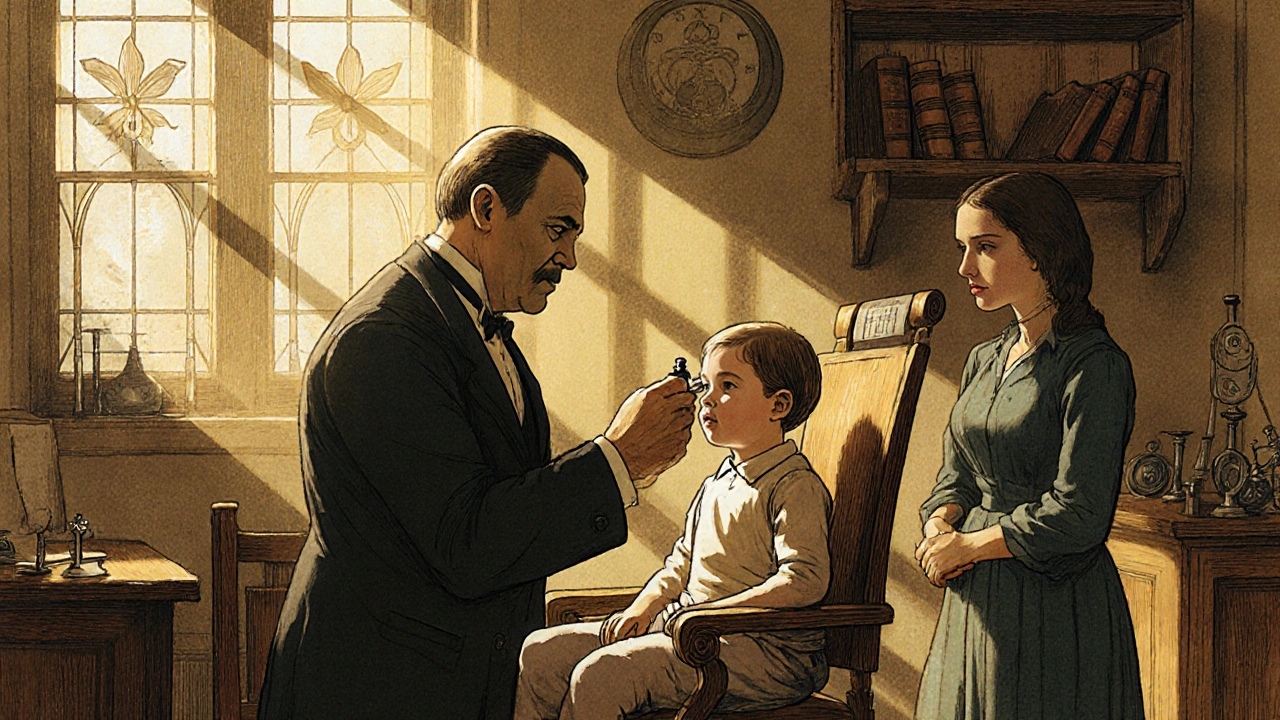Cyclogyl: What It Is, How It Works, and What You Need to Know
When your eye doctor says you need your pupils dilated, they might reach for Cyclogyl, a brand name for the eye drop cyclopentolate, used to temporarily widen the pupil and relax the eye’s focusing muscle. Also known as cyclopentolate hydrochloride, it’s one of the most common medications used before eye exams, especially in children and patients with certain eye conditions. Unlike regular reading glasses that help you see up close, Cyclogyl doesn’t fix vision—it stops your eye from adjusting focus so the doctor can see clearly inside.
It’s not just for routine checkups. Cyclogyl is also used before eye surgery, to treat inflammation like uveitis, and to help diagnose problems like lazy eye or unexplained vision changes. The effects usually start in 30 to 60 minutes and last anywhere from 6 to 24 hours, depending on the dose and the person. You’ll notice blurry vision, especially up close, and your eyes will be extra sensitive to light. That’s normal. But if your vision doesn’t return after a day, or you feel a racing heart, confusion, or trouble urinating, call your doctor—those could be signs of an overdose or reaction.
It’s worth knowing that Cyclogyl isn’t the only option. Other pupil-dilating drops like atropine, tropicamide, and phenylephrine are also used, each with different strengths and durations. Tropicamide works faster and wears off quicker, making it popular for quick exams. Atropine lasts days and is used for serious inflammation or in kids with severe focusing issues. Cyclogyl sits in the middle—strong enough to get the job done, but not so long-lasting that it disrupts school or work for days.
Parents often worry about giving Cyclogyl to kids. It’s safe when used correctly, but kids are more sensitive to the side effects. A single drop can cause drowsiness, flushed skin, or even mild hallucinations in rare cases. That’s why doctors use lower doses for children and watch them closely after administration. Always follow the exact number of drops prescribed—more doesn’t mean better.
There’s no magic trick to avoiding the side effects. You can’t speed up how fast Cyclogyl leaves your system. But you can prepare: wear sunglasses after your appointment, avoid driving or operating machinery, and keep kids away from bright lights and screens for a few hours. If you’re on other medications—especially for heart conditions, depression, or allergies—tell your eye doctor. Cyclogyl can interact with antihistamines, antidepressants, and some asthma drugs.
What you’ll find below is a collection of real, practical guides that connect to Cyclogyl’s world: how eye medications work, what to expect during eye exams, how pupil dilation affects daily life, and how other drugs like scopolamine or desonide compare in their use and safety. These aren’t marketing pages—they’re answers from people who’ve been there, whether they’re parents, patients, or caregivers trying to understand what’s happening to their eyes.

Cyclogyl vs Alternatives: Compare Cyclopentolate Ophthalmic Eye Drops for Eye Exams
Cyclogyl (cyclopentolate) dilates pupils for eye exams but has longer-lasting effects and more side effects than alternatives like tropicamide. Learn when each option is best and what to ask your eye doctor.
